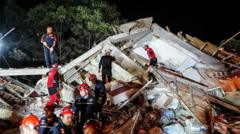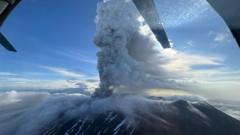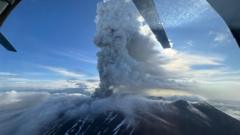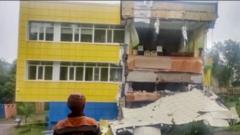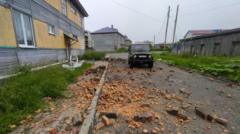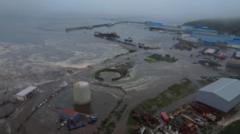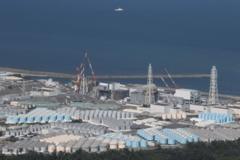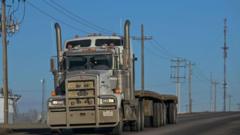This article delves into the recent 7.7-magnitude earthquake in Myanmar, emphasizing safety steps for travelers heading to quake zones.
**Understanding Earthquake Safety: Essential Tips for Travelers**

**Understanding Earthquake Safety: Essential Tips for Travelers**
Be prepared for seismic activity in earthquake-prone vacation destinations with these critical safety tips.
Travelers often flock to popular areas that lie within risk zones for earthquakes, including destinations like California, Italy, and Japan. Following a recent devastating earthquake in Myanmar that claimed thousands of lives, it is imperative for tourists to prioritize safety while navigating these regions.
On March 28, a significant 7.7-magnitude earthquake hit central Myanmar, resulting in widespread destruction and at least 3,500 fatalities. This seismic event also impacted the bustling city of Bangkok, where buildings shook and even structural collapses were reported. Videos circulating on social media showcased water cascading from high-rise pools, creating a frantic scene across the city.
When planning a trip to any location prone to seismic activity, doing thorough research is essential. Understanding your destination's earthquake history and current safety protocols can significantly enhance your preparedness.
Many popular locations worldwide have developed advanced systems for early detection of earthquakes, enabling local agencies to issue real-time alerts. These systems utilize a network of sensors that monitor seismic waves, sending push notifications to residents’ and travelers’ mobile devices. As Sara McBride, a scientist at the U.S. Geological Survey Earthquake Hazards Program, emphasizes, "Seconds matter," highlighting how timely alerts can enhance survival during quakes.
Travelers are encouraged to download essential emergency alert apps specific to their destination—options include SASSLA for Mexico, SafetyTips or NERV for Japan, and MyShake in the U.S. Being informed through these channels can be a lifesaver.
Additionally, registering with the State Department’s Smart Traveler Enrollment Program can help keep your loved ones updated about your whereabouts, particularly in unpredictable situations like earthquakes that may hinder communications. Creating a safety plan that includes sharing your travel itinerary with friends or family can prove invaluable should disaster strike.
As travelers flock to popular earthquake zones, prioritizing safety and preparedness is key to ensuring a secure and enjoyable experience amid the beauty of global destinations.
On March 28, a significant 7.7-magnitude earthquake hit central Myanmar, resulting in widespread destruction and at least 3,500 fatalities. This seismic event also impacted the bustling city of Bangkok, where buildings shook and even structural collapses were reported. Videos circulating on social media showcased water cascading from high-rise pools, creating a frantic scene across the city.
When planning a trip to any location prone to seismic activity, doing thorough research is essential. Understanding your destination's earthquake history and current safety protocols can significantly enhance your preparedness.
Many popular locations worldwide have developed advanced systems for early detection of earthquakes, enabling local agencies to issue real-time alerts. These systems utilize a network of sensors that monitor seismic waves, sending push notifications to residents’ and travelers’ mobile devices. As Sara McBride, a scientist at the U.S. Geological Survey Earthquake Hazards Program, emphasizes, "Seconds matter," highlighting how timely alerts can enhance survival during quakes.
Travelers are encouraged to download essential emergency alert apps specific to their destination—options include SASSLA for Mexico, SafetyTips or NERV for Japan, and MyShake in the U.S. Being informed through these channels can be a lifesaver.
Additionally, registering with the State Department’s Smart Traveler Enrollment Program can help keep your loved ones updated about your whereabouts, particularly in unpredictable situations like earthquakes that may hinder communications. Creating a safety plan that includes sharing your travel itinerary with friends or family can prove invaluable should disaster strike.
As travelers flock to popular earthquake zones, prioritizing safety and preparedness is key to ensuring a secure and enjoyable experience amid the beauty of global destinations.

